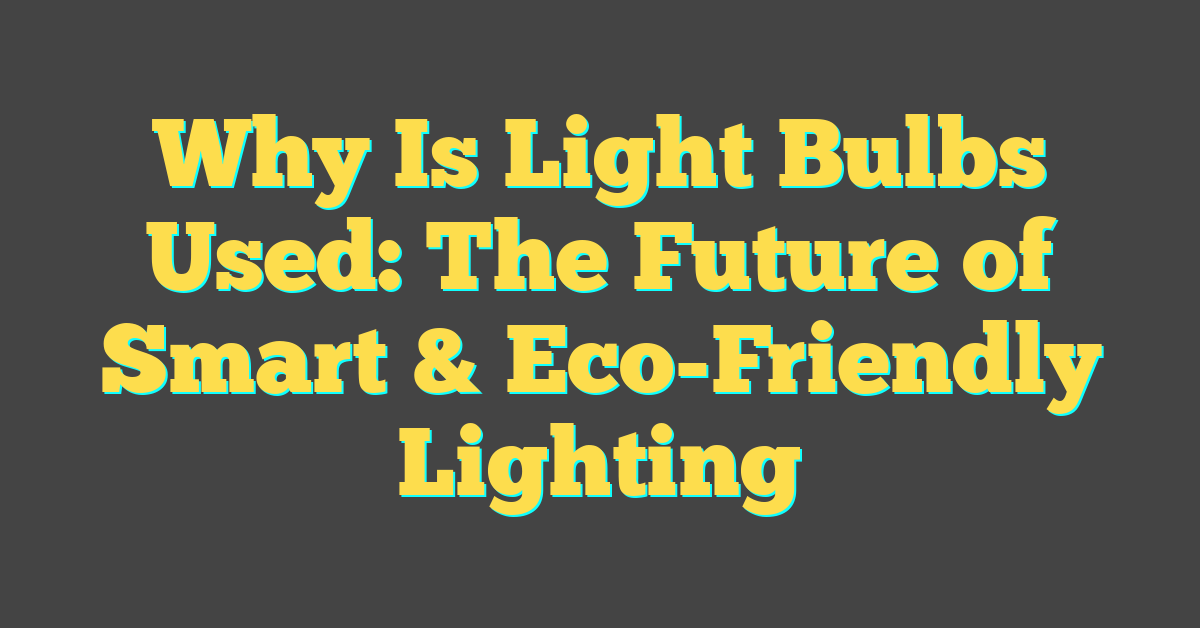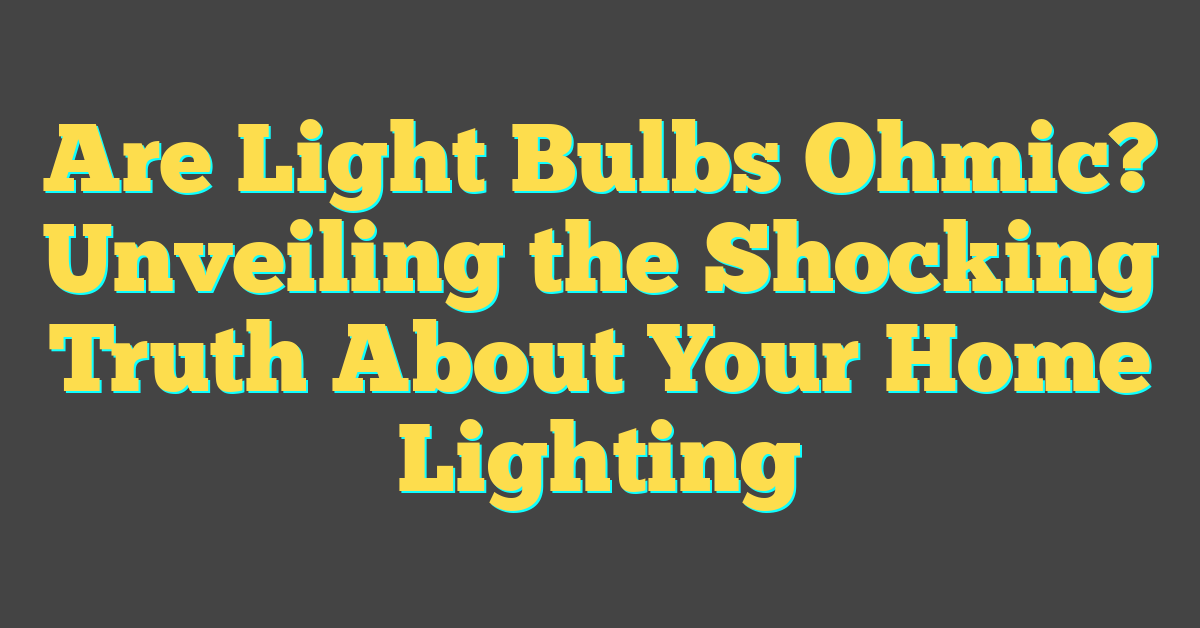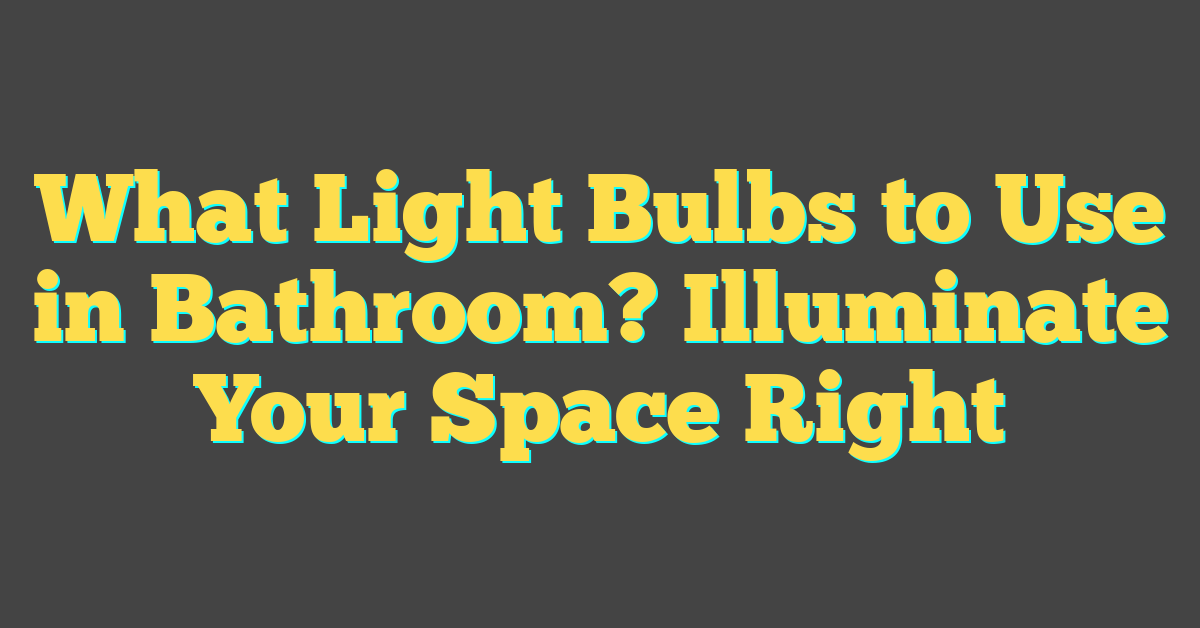Ever wondered why light bulbs are pretty much everywhere you look? It’s because they’re the unsung heroes that light up our lives—quite literally. From the cozy lamp in your reading nook to the bright lights of city skylines, they’re essential in ways you might not even realize.

Think about it: without light bulbs, you’d be stuck with candles or oil lamps. Not only would that be a hassle, but it’d also be a fire hazard! Light bulbs have revolutionized the way you live, work, and play, making them a cornerstone of modern life.
So, let’s flip the switch and shed some light on why these brilliant inventions have become such an integral part of your daily routine. You’re about to discover that there’s more to the humble light bulb than meets the eye.
Evolution of Lighting Technology
Dive deep into the history of lighting and you’ll see it’s been a remarkable journey. Imagine yourself huddling by a flickering flame, the earliest source of light. Fast forward and you’re witnessing the advent of the incandescent bulb in the late 19th century, a groundbreaking innovation that began to illuminate the world like never before.
As your home DIY projects might reveal, the incandescent bulb was just the starting point. Thomas Edison and Joseph Swan played pivotal roles in perfecting this technology, but it wasn’t long before new advancements emerged. The humble light bulb has undergone a transformation, morphing into more efficient forms.
- Fluorescent lights came next, bigger and longer-lasting.
- Then, the 1960s brought the halogen lamp, a brighter and more color-accurate option.
- Compact fluorescent lamps (CFL) soon followed, merging efficiency with a smaller form factor.
The true revolution, however, began with the Light Emitting Diode (LED). LEDs marked a leap in longevity and low energy consumption, turning your lighting projects green without sacrificing brightness.
Consider the data on energy efficiency:
| Bulb Type | Lifespan (Hours) | Energy Used (Watts) |
|---|---|---|
| Incandescent | 1,000 | 60 |
| CFL | 8,000 | 14 |
| LED | 25,000 | 8 |
As you replace bulbs in your home, you’re not just screwing in a new light source; you’re participating in the history of a technology that has constantly evolved to meet the needs of society. The light bulb today is not only a testament to human ingenuity but also an essential component of sustainable living. Embrace the change in your lighting choices, and you’ll be part of this incredible progression.
The Birth of the Light Bulb

In the realm of home DIY projects, there’s nothing quite like the satisfaction of perfectly lighting up a space. But have you ever stopped to ponder where it all began? The light bulb, an unassuming invention, revolutionized not just your home decor but the course of history. It’s no exaggeration to say that it sparked the beginning of a new era.
Before the light bulb’s inception, folks relied on candles and gas lamps. These archaic sources of light were not only inefficient but also posed significant fire hazards. Then in the 1800s, the quest for a safer, more efficient light source began in earnest. Pioneers like Thomas Edison and others started experimenting with electricity and filament materials to produce light. This curiosity and determination paved the way for the first commercially viable incandescent bulb.
Incandescent bulbs were a marvel of their time, and Edison’s name became synonymous with this groundbreaking innovation. Yet, it was a culmination of efforts from numerous inventors who contributed to what you know as the modern light bulb. The final design used a thin filament inside a glass vacuum bulb. When electricity passed through this filament, it glowed, lighting up surroundings with a warm, steady flame-like luminance without an actual flame.
This invention didn’t just enhance home lighting; it fundamentally changed human living. Streets could be lit at night, workplaces could operate longer, and homes became places of comfort and productivity well after sunset. Your DIY lighting projects stand on the shoulders of this rich history.
With each iteration and advancement, whether it was the move to CFLs or the more recent shift to LEDs, it’s clear that the light bulb is not merely a tool for illumination. It’s a symbol of human innovation, a testament to your relentless pursuit of improving the world, one bright idea at a time. So next time you flip that switch, remember that you’re partaking in a legacy of brilliance that dates back over a century.
Advantages of Using Light Bulbs

« Why Are Light Bulbs Orange? Unlock the Cozy Secrets to Better Sleep
Do Light Bulbs Have a Warranty? Unveil the Truth & Maximize Your Purchase »
When you think about it, it’s tough to imagine life without the convenience of light bulbs. They are, in essence, the unsung heroes of your daily life, illuminating your late-night DIY projects or casting a warm glow over dinner. Here’s a deep dive into the myriad benefits that these little glass globes bring to your world.
Accessibility and Usability are top of the list. With just a flick of a switch, you turn night into day within the confines of your home. This round-the-clock accessibility to light has transformed how we live and work. Before the advent of the bulb, your ancestors relied on natural light, restricting their productive hours.
Moreover, light bulbs are incredibly versatile. They don’t just light your room; they create ambiances. A dimmable LED can set the mood for a movie night, while a bright white bulb is perfect when you’re tinkering in your workshop. The options are endless:
- Soft white bulbs for a cozy feel
- Daylight bulbs for detailed tasks
- Colored LEDs for creative lighting schemes
Think about energy efficiency. Modern bulbs, particularly LEDs, are renowned for their Low Energy Consumption. Here’s a quick comparison of the wattages typically used by different light bulbs for the same amount of light:
| Light Bulb Type | Watts (Approximate) |
|---|---|
| Incandescent Bulbs | 60 |
| CFL Bulbs | 14 |
| LED Bulbs | 10 |
LEDs use a fraction of the electricity of traditional incandescent bulbs, saving you money on utilities and reducing your carbon footprint. Talk about a win-win.
Last but certainly not least, there’s Durability. LEDs are not only cost-effective but also incredibly long-lasting. It’s not unusual for an LED bulb to have a lifespan of 25,000 hours or more, saving you the inconvenience and expense of frequent replacements.
As you continue to light up your life, remember these advantages. Whether you’re staging the perfect Instagram photo, reading under a cozy lamp, or illuminating your backyard bash, light bulbs offer more than just functional benefits; they enhance your quality of life.
Different Types of Light Bulbs

When you’re on the hunt for the perfect bulb to brighten your space, you’ll find a wealth of options at your fingertips. Each type has its own unique set of qualities that cater to different settings and preferences.
Incandescent Bulbs are likely the ones you grew up with. They project a warm glow and are often used in living spaces where a cozy atmosphere is desired. They’re not as energy-efficient as their modern counterparts, but they continue to be beloved for their classic look and dimming capabilities.
Another staple in the lighting world is the Halogen Bulb. These are essentially an evolved version of the incandescent bulb, offering a brighter light and better energy efficiency. Halogen bulbs are particularly good for task lighting, making them a top pick for kitchens and workspaces.
Let’s not forget CFLs, or Compact Fluorescent Lamps. These curly wonders take a moment to warm up but offer substantial energy savings over incandescents. They’ve captured a significant part of the market, with many people opting for CFLs to cut down on energy costs.
But when it comes to energy efficiency, nothing beats LED Bulbs. Praised for their incredibly low energy consumption and long lifespan, LED bulbs are the go-to for environmentally conscious consumers. They come in a range of colors and temperatures, allowing you to tailor the ambiance of each room to your liking.
For those who fancy the tech side of things, Smart Bulbs have entered the scene with gusto. These innovative bulbs can change color, adjust brightness, and even be controlled via smartphone apps. They’re perfect for setting scenes for movie nights or parties at the tap of a screen.
Dive into the world of bulbs for your next DIY project, and you’ll find that each type illuminates your space in its own unique way. Whether you’re looking to create a warm inviting atmosphere, focus on work or simply save energy, there’s a light bulb tailored for your needs.
The Future of Light Bulbs

As you dive deeper into the world of light bulbs, it’s essential to peek at what’s coming down the pipeline. The lighting industry is rapidly evolving, and with advancements in technology, the future looks bright—in every sense of the word.
Innovation in lighting technology is steering towards bulbs that offer not only more energy efficiency but also improved functionality. Imagine light bulbs that do more than just illuminate your space. Developers are working on bulbs with built-in sensors that can detect when someone enters a room, adjusting the brightness accordingly — a step up for energy conservation and convenience.
The integration of light bulbs with home automation systems is another area ripe for growth. Soon, controlling your lights could be as seamless as speaking a command or scheduling them to match your daily routine. This can already be seen with smart bulbs, but the technology is still in its infancy, and the potential for further integration is immense.
As a DIY enthusiast, you’ll appreciate the push for user-friendly, customizable lighting options. Modular lighting systems are on the rise, allowing you to tailor lighting fixtures to your space and mood. Think along the lines of adding or removing light sources as needed, or even changing the color temperature to suit different times of day or activities.
Green technology also plays a significant role in the future of light bulbs. With a growing emphasis on reducing the carbon footprint, advancements in eco-friendly materials and production processes are at the forefront. You can expect to see bulbs that are not only more efficient but also have a lower environmental impact during production and after they’ve served their purpose.
It’s an exciting time to be involved in the world of lighting. The possibilities are expanding, and with those possibilities come new ways to express your creativity in home projects. Stay tuned to see how light bulbs continue to evolve, transforming our spaces and the ways we interact with them.
Conclusion
You’ve seen how light bulbs have evolved from simple illuminators to smart, energy-efficient beacons of the future. With tech that tunes in to your presence and systems that sync with your smart home, lighting is no longer just about seeing in the dark—it’s about creating an experience. As you embrace the wave of green technology, remember that each bulb you choose can be a small step towards a brighter, more sustainable world. So go ahead, light up your space and let your creativity shine!
Frequently Asked Questions
What is the main focus of the article?
The article primarily discusses the evolution of light bulbs, from traditional incandescent bulbs to the latest advancements in lighting technology, including smart bulbs and modular lighting systems.
How have light bulbs evolved according to the article?
Light bulbs have evolved from basic incandescent designs to more advanced versions with energy efficiency and smart technology, which include sensors, connectivity with home automation systems, and customizable features.
What are some features of the new light bulbs mentioned in the article?
New light bulbs are being designed with built-in sensors to adjust brightness automatically, integration with home automation for centralized control, and modular designs for customizable lighting solutions.
Why is green technology important in the development of light bulbs?
Green technology is crucial in the development of light bulbs because it leads to more energy-efficient and environmentally friendly lighting options, reducing the ecological footprint and energy costs.
What does the article suggest about the future of lighting?
The article suggests that the future of lighting is geared towards more creative and innovative solutions that expand the possibilities for personal expression in home lighting projects, thanks to advancements in technology and green practices.




